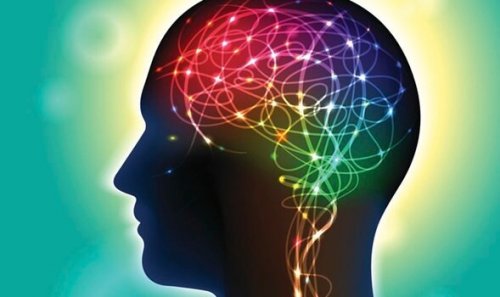You Have the Power to Sculpt Your Own Brain

“You have the power to sculpt your own brain.” This quote by Santiago Ramon y Cajal is now more relevant than ever. Your own thoughts have created and continue to create your world. Today, we know that self-confidence, enthusiasm, and hope can improve the brain’s higher functions.
According to several scientific studies, the brain has a high degree of plasticity. This means that it changes as you gain more experiences. Your brain never loses this quality. Thus, you can keep learning your entire life. In fact, every time you learn something new, your brain changes. That’s why we say that you can sculpt your own brain.
The brain coordinates a complex web of actions including motor function, audiovisual processing, and linguistic verbal knowledge. When you learn something new, you probably won’t be good at it at first. However, as you practice it, you’ll get better at it. Psychologically speaking, this means that we can change anxious and depressive states of mind as well as other processes.
“The mind is not a vessel to be filled, but a fire to be kindled.”
-Plutarch-
Reprogramming your brain to change your behavior
Dr. Joe Dispenza, Doctor of Chiropractic, biochemist, and scientist, argues that humans have the power to change daily. He believes in their ability to sculpt the brain through personal experience. “If you were to set out every morning to define what the best view you can have of yourself is, you’d live in another kind of world,” Dispenza asserts.
The latest scientific research has shown that genes are equally plastic. They’re like switches. That is to say, some are turned on and some are turned off depending on your body’s chemical state. Experts refer to this phenomena as epigenetics.

A relevant study in this area was carried out on patients with type 2 diabetes. They found that people with this disease who went to comedy workshops showed lowered blood sugar levels without taking insulin. The explanation is that some genes were activated just by their laughter. This discovery opens the doors to new interventions and hypotheses.
“Nothing inspires more reverence and awe in me than an old man who knows how to change his mind.”
-Santiago Ramón Y Cajal-
The brain is like a parachute
Every time you think, your brain manufactures chemical substances which function as signals. These substances can change your mood automatically. That’s why you get in a bad mood if you have negative and unhappy thoughts.
The problem with all of this is that your thoughts and emotions feed each other. As soon as you start to feel how you think, you start to think how you feel. In other words, if you have a sad thought and start to feel sad, you can end up falling into very negative states.
So you begin to adopt that state as your personality little by little. You come to think like and even to identify as an unhappy, negative, or guilty person. Nevertheless, what actually happened was that you were affected by the chemical substances that your brain produced.

Keep in mind that your body gets used to certain levels of chemicals flowing through your bloodstream. Any change to your body’s normal and comfortable chemical composition will result in feelings of discomfort.
Your body will then do practically anything in its power, consciously and unconsciously, to recover that chemical balance you had gotten used to. And this is all based on what you’re feeling. At this point, the body comes to rule the mind.
However, the good news is that none of these things are unavoidable. With a bit of effort, knowledge, and action, you can sculpt your own brain and shift your mood and the way you feel about things.
“It is important to realize that if certain areas of science appear to be quite mature, others are in the process of development, and yet others remain to be born.”
-Santiago Ramón y Cajal-
This text is provided for informational purposes only and does not replace consultation with a professional. If in doubt, consult your specialist.








